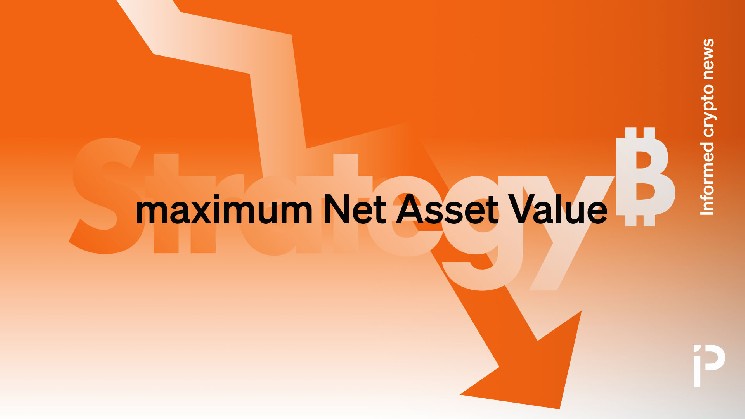The fundamental premium held by MSTR, the common stock of MicroStrategy (formerly known as MicroStrategy), over Bitcoin (BTC) holdings has been declining for 28 months and is now below 1x.
Since July 2023, it would have been better to own BTC than to buy MSTR, and the market cap of MSTR is currently less than the value of the BTC you own.
A sad day for those who believed MSTR was amplified BTC, like founder Michael Saylor.
In fact, I recently discovered that MSTR was the complete opposite..
read more: Michael Saylor continues to dilute the value of MSTR even after changing his commitments
Strategy, the world’s largest digital asset treasury (DAT) company, has been accumulating BTC since August 2020.
During this time, a unique investor community, “Irresponsibly Long MSTR,” coined the phrase “Multiple to Net Asset Value (mNAV)” as a way to express how much more you are paying for MSTR compared to just buying BTC.
They happily ignored all constraints on their BTC, including repeated warnings from shareholders. You own no shares and can never redeem your shares Bitcoin.
Determined to prove to the world that they had discovered a new financial breakthrough, Irresponsible Long MSTR and other fans of the BTC financial model popularized the mNAV acronym all the way to the top of strategic management, the fruit of years of iteration by Mr. Saylor and CEO Mr. Von Reh.
Strategy mNAV: 3.2x to 0.96x
By November 2024, its mNAV index reached 3.2 times, the highest level in recent years. All its glory is gone.
The rapidly shrinking mNAV is still visible on the Strategy.com home page, albeit with a revised and better-looking variant, Enterprise Value mNAV.
To avoid displaying an embarrassing 0.96x in the index’s original basic form, Strategy now displays an enterprise value of 1.21x mNAV after adding approximately $15 billion worth of pro forma value from preferred stock and net debt.
But the truth is simple and tragic. The market capitalization of MSTR is lower than the company’s BTC value.
The original mNAV metric declined from 3.2x to 0.96x in 12 months, marking the end of the era of memetic and dubious metrics.








